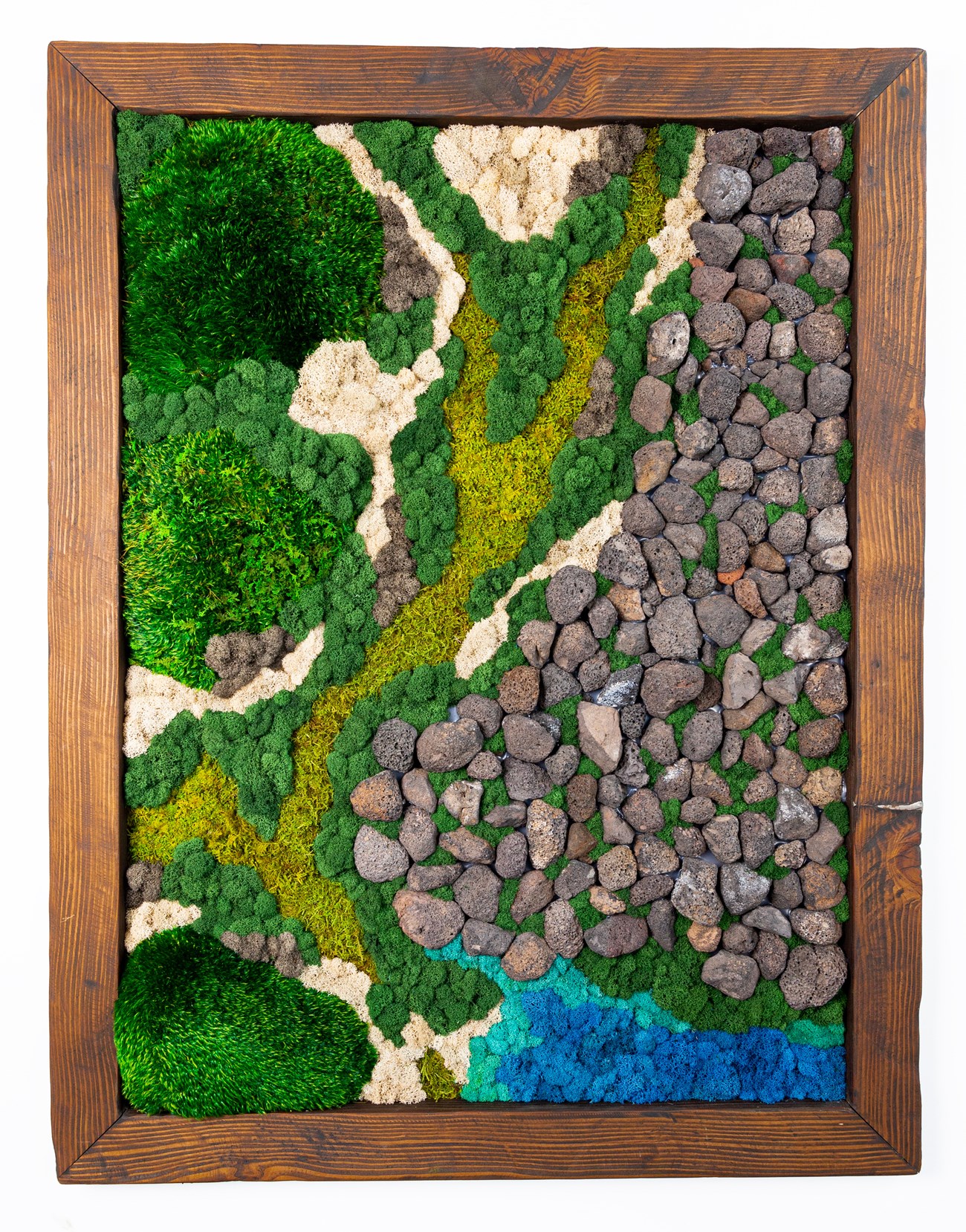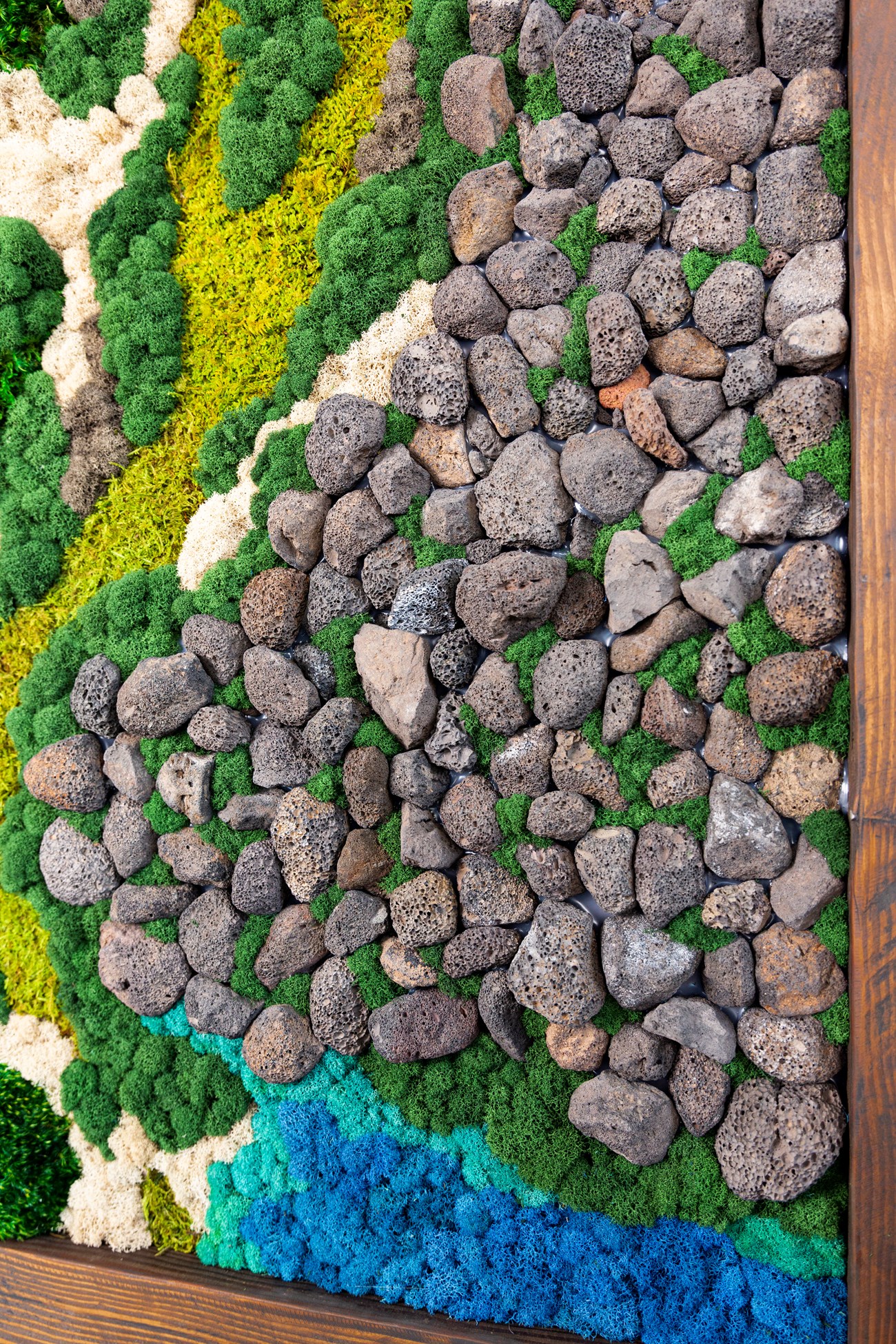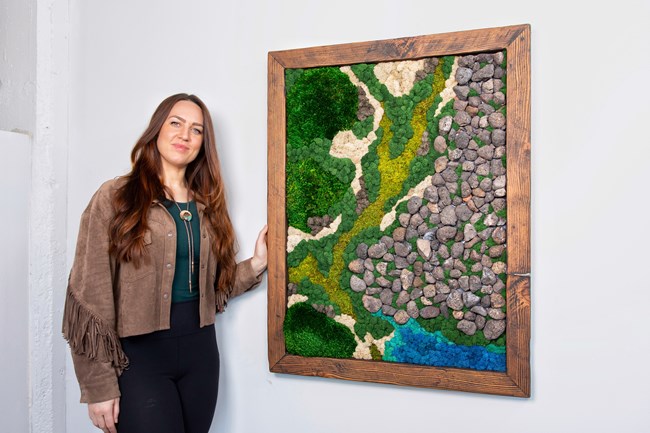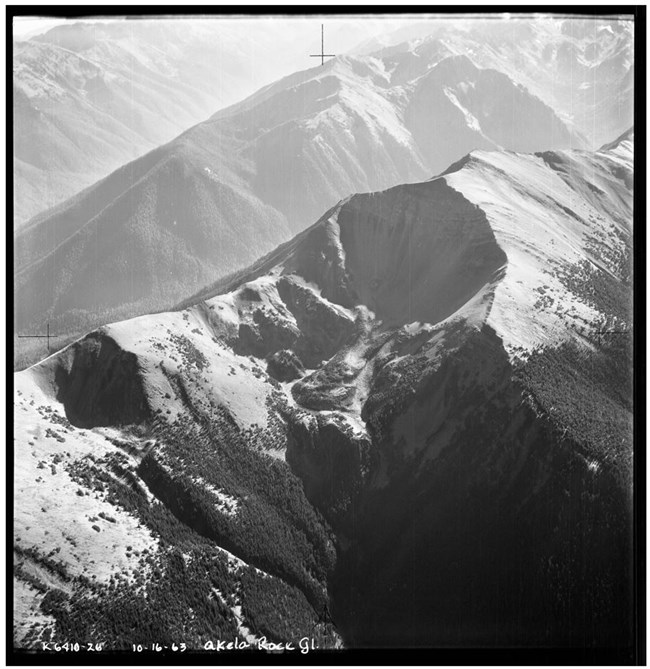

"When I first heard about the Terminus project, I was immediately excited about the opportunity to create something inspired by one of my favorite places on this Earth. As I learned more about the concept of Terminus, I felt as though my medium aligned perfectly with the goal of the project – preserved plants to preserve glaciers! When I was assigned my specific glacier 'Akela', I was fascinated to learn it was a 'rock glacier' – something I had never heard of before, but was the perfect match for me. The Akela Glacier is the largest and best developed rock glacier in the Olympic mountains. A rock glacier is a flowing body of rocks that move down a mountain due to interstitial ice. Rock glaciers don't look like regular glaciers because they are typically covered with a thick layer of rock and debris with the ice hidden beneath. The Akela Glacier is a tongue-shaped mass that formed somewhere between 3-5000 years ago and is already extinct. Data was collected to determine the age of the trees and the lichen growing on Akela to see how long the glacier had been stabilized. The oldest trees studied were at least 245 years old and the largest lichen patch was estimated to have begun forming 900-2000 years ago. The abundance of mature trees, vegetation, and lichens on both the upper and lower lobe fronts of Akela suggests that the entire glacier is inactive and has most likely not been active for at least 300 years. "Akela is located near the Gray Wolf Ridge in the Olympic Mountains. The name 'Akela' was given to this rock glacier by Austin Post of the US Geological Survey in the early 1960's. Post got the name from Rudyard Kipling's Jungle Books in which Akela is the leader of a pack of gray wolves. "My piece 'Akela the Rock Glacier' was created using rocks nestled within preserved mood, sheet and reindeer mosses. The frame is custom made using locally reclaimed wood." -Kate Shooltz 


Meet the artist: Kate ShooltzKate Shooltz is a Philadelphia-based moss artist known as Kate the Earthling. Inspired by the natural world and her passion for the Earth, her creations promote a biophilic lifestyle enriched by nature. By using only preserved moss and plants elements her creations require no water or sunlight yet remain green and soft for years to come. Using preserved plants ensures that her creations are accessible to everyone regardless of their green thumb or environment. Since 2018, Kate the Earthling has created one-of-a-kind moss walls for clients all over the United States in residential, commercial, and retail spaces. Her work has been featured on Bravo TV’s Vanderpump Rules and Family Karma, in Italian Magazine Biophilia Natural Trend and in various online publications such as PureWow. Kate takes pride in creating a unique piece for each client and never duplicating a design. With only the help of her trusted frame builders, every natural element is arranged solely by Kate in her Philadelphia art studio - each patch of moss and individual fern placed with intention and care. The happiness and purpose Kate has found in a life filled with nature is truly fulfilling. Through her artwork she hopes to inspire others to live the same. You can see more from Kate here at her website, and here on her Instagram page. 
Austin Post More about Akela GlacierAkela Glacier is unique in that it is a rock-glacier, the only one in Olympic National Park. These features have a covering of rocks and debris on the surface, and rocks bound together with ice below, creating a mass that can flow downslope like a glacier. It's meltwaters feed into the Dungeness River, which flows north and into the Strait of Juan de Fuca outside the town of Sequim. See Kate's artist statement above for more background on Akela Glacier. 
|
Last updated: April 19, 2023
